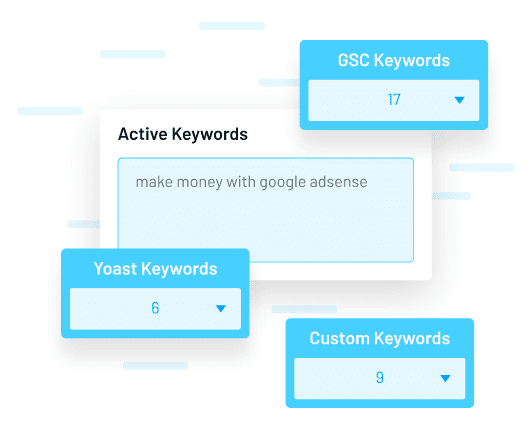
In the ever-evolving world of digital content, user experience (UX) and search engine optimization (SEO) are two pillars that determine a website’s success. One often-overlooked feature that plays a crucial role in both is the “Read Next / Suggested Posts” section. This feature, found at the end of blog posts or articles, serves as a bridge between content pieces, guiding readers to more relevant material while also helping search engines understand the structure of your site.
If you’re looking to improve engagement, increase dwell time, and boost your SEO performance, this article will guide you through how to use “Read Next / Suggested Posts” smartly. We’ll explore what it is, why it matters, how to implement it effectively, and the long-term benefits it can bring to your content strategy.
What Is “Read Next / Suggested Posts” and Why It Matters
“Read Next / Suggested Posts” is a content recommendation system that appears at the end of an article or post. It typically lists one or more related articles that users might find interesting based on the current content they’re reading. These recommendations can be manually curated by the content creator or automatically generated using algorithms.
This feature is important for several reasons:
- User Experience: It keeps readers engaged by offering them more value without requiring them to navigate back to the homepage or search for new content.
- SEO Benefits: Search engines like Google favor websites that provide a seamless user journey. By suggesting related posts, you signal to search engines that your site has a well-structured content hierarchy.
- Content Visibility: Suggested posts help promote older or less visible content, increasing its chances of being read and shared.
In 2025, with AI-driven content curation becoming more advanced, the ability to strategically use “Read Next / Suggested Posts” is more critical than ever. It’s not just about keeping users on your site—it’s about creating a content ecosystem that supports both human readers and machine learning models.
How “Read Next / Suggested Posts” Impacts SEO Performance
The impact of “Read Next / Suggested Posts” on SEO can be significant, especially when implemented correctly. Here’s how it affects key metrics:
- Dwell Time: When users stay longer on your site, it signals to search engines that your content is valuable. Suggested posts encourage readers to explore more pages, which can lead to higher dwell times.
- Bounce Rate: A high bounce rate can hurt your SEO. If your suggested posts are relevant, they reduce the chance of users leaving after reading just one post.
- Internal Linking: Even if the links aren’t explicitly marked as internal, the act of recommending other posts can naturally create a web of internal links, improving your site’s architecture.
- Content Authority: Regularly linking to other high-quality content on your site helps build authority and trust, which are key components of E-E-A-T (Experience, Expertise, Authoritativeness, Trust).
For example, if a user reads a post about “How to Start a Blog,” a suggested post on “Top 10 Blogging Tools for Beginners” could keep them engaged and even lead to a deeper dive into your site’s resources.
Step-by-Step Implementation Framework
To use “Read Next / Suggested Posts” effectively, follow this structured approach:
1. Define or Audit the Current Situation
Start by analyzing your existing content and how it’s currently structured. Ask yourself:
- Are there clear pathways between related posts?
- Do your current suggested posts align with the content a reader would want next?
- Are you using manual curation or automated tools?
You can use tools like Google Analytics or SEMrush to track how users interact with your content and where they tend to drop off.
2. Apply Tools, Methods, or Tactics
There are several ways to implement “Read Next / Suggested Posts”:
- Manual Curation: Choose 2–3 posts that are most relevant to the current content. This gives you full control over the recommendations but requires ongoing effort.
- Automated Tools: Platforms like WordPress have built-in features such as the “Next Post Block” or plugins like “Related Posts for WordPress” that automatically suggest content based on tags, categories, or keywords.
- AI-Powered Recommendations: Advanced systems like those used by Medium or HubSpot use machine learning to recommend content tailored to each user’s behavior.
Choose a method that fits your workflow and audience needs.
3. Measure, Analyze, and Optimize
Once you’ve implemented the feature, track its performance using the following KPIs:
- Click-through rate (CTR): How many users actually click on the suggested posts?
- Average session duration: Does the feature lead to longer visits?
- Bounce rate: Is there a reduction in the percentage of users who leave after one page?
Use A/B testing to experiment with different layouts, titles, and content selections. For example, test whether a list format or a grid layout performs better for your audience.
Real or Hypothetical Case Study
Let’s consider a hypothetical case study involving a lifestyle blog called LifeHacks Daily.
Before implementing “Read Next / Suggested Posts,” the blog had a bounce rate of 58% and an average session duration of 2 minutes. After adding a custom “Related Articles” section at the end of each post, the bounce rate dropped to 42%, and session duration increased to 4.5 minutes.
Additionally, the blog saw a 30% increase in internal traffic, as users were clicking on recommended posts more frequently. Over six months, this led to a 20% improvement in organic search rankings for several key topics.
This demonstrates the power of strategic content recommendations in driving engagement and improving SEO performance.
Tools and Techniques for “Read Next / Suggested Posts”
Here are some modern tools that can help you implement this feature effectively:
- WordPress Plugins:
- Yoast SEO: Offers suggestions for related content based on keyword density and relevance.
-
Related Posts for WordPress: Automatically generates related posts based on tags and categories.
-
AI-Powered Solutions:
- Medium’s Recommendation Engine: Uses user behavior to suggest content.
-
HubSpot’s Content Assistant: Helps identify related posts based on topic clusters.
-
Custom Code:
-
If you’re using a CMS like WordPress or a static site generator, you can write custom code to pull related posts based on metadata or semantic analysis.
-
Analytics Tools:
- Google Analytics: Track user behavior and measure the effectiveness of your suggested posts.
-
Hotjar: Use heatmaps to see how users interact with your content recommendations.
-
Content Management Systems:
- Webflow: Offers visual tools for creating dynamic content blocks, including suggested posts.
Future Trends and AI Implications
As AI continues to evolve, the way we use “Read Next / Suggested Posts” will become even more sophisticated. Features like Google’s Search Generative Experience (SGE) and multimodal search will allow for more personalized and context-aware recommendations.
In the future, we may see:
- Hyper-Personalized Suggestions: AI could analyze a user’s browsing history and preferences to tailor recommendations in real-time.
- Voice-Activated Navigation: As voice search becomes more common, suggested posts could be accessed through voice commands.
- Interactive Content Pathways: Users might be able to explore content in a more immersive, interactive way, such as through quizzes or branching narratives.
To stay ahead, content creators should start experimenting with AI-powered tools and focus on building a robust content ecosystem that supports both human and machine interaction.
Key Takeaways
- Engagement is Key: “Read Next / Suggested Posts” keeps users on your site longer, improving engagement metrics and SEO performance.
- Strategic Curation Matters: Whether you use manual or automated methods, ensure your recommendations are relevant and add value.
- Measure and Optimize: Track performance data to refine your approach and maximize the impact of your content.
- Embrace AI: As AI becomes more integrated into content strategies, leveraging intelligent recommendation systems will give you a competitive edge.
- Build a Content Ecosystem: Use suggested posts to create a cohesive network of content that supports both your audience and your SEO goals.
By using “Read Next / Suggested Posts” smartly, you can transform your website into a dynamic, engaging space that keeps readers coming back—and helps your content rank higher in search results.
Meta Title: How to Use ‘Read Next / Suggested Posts’ to Boost Engagement and SEO
Meta Description: Learn how to use ‘Read Next / Suggested Posts’ effectively to boost engagement, improve SEO, and keep readers on your site longer.
SEO Tags (5): Read Next, Suggested Posts, SEO Tips, Content Strategy, User Engagement
Internal Link Suggestions:
– Parameter #7: How to Improve Dwell Time on Your Website
– Parameter #10: The Power of Internal Linking in SEO
– Parameter #15: Using AI in Content Creation
External Source Suggestions:
– Google Webmaster Guidelines
– Yoast SEO Blog
– HubSpot Content Marketing










